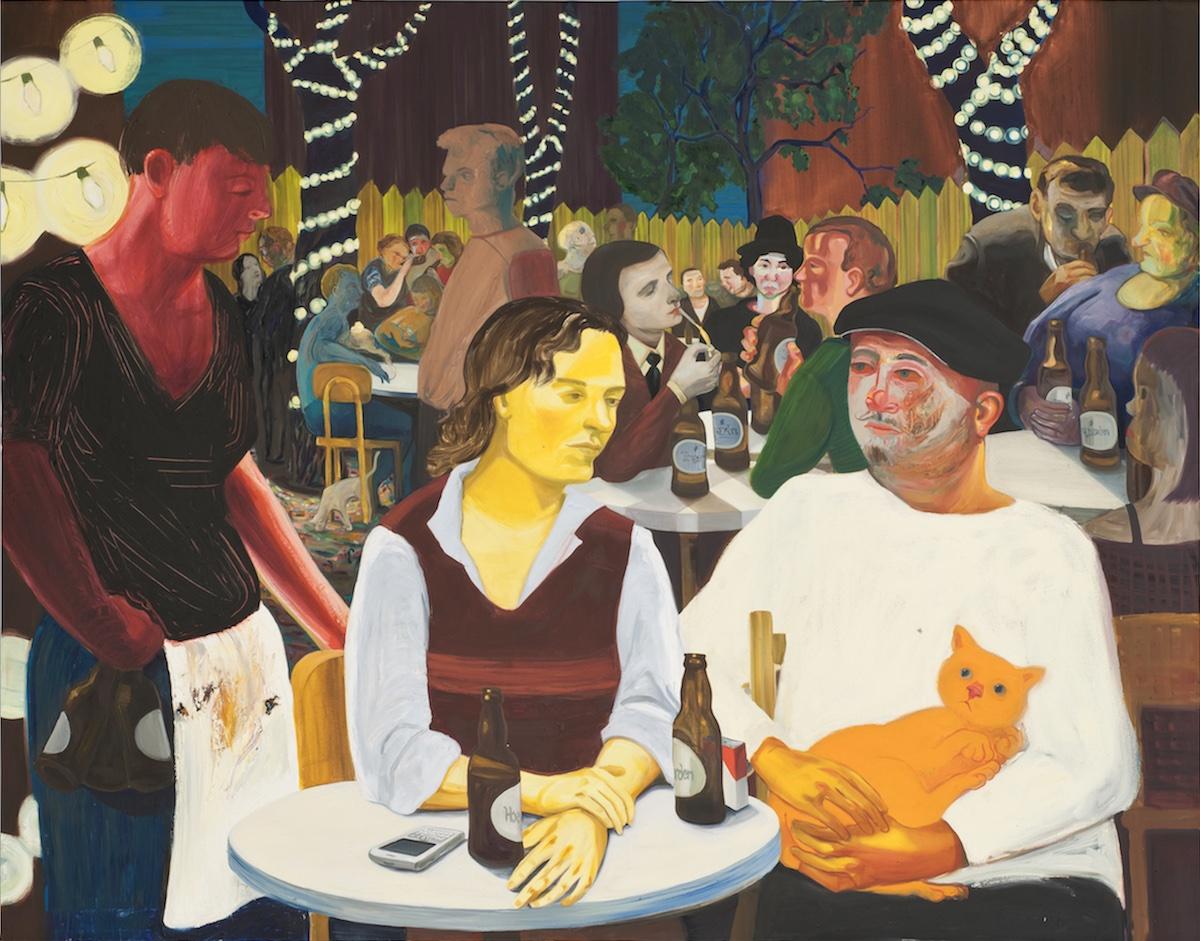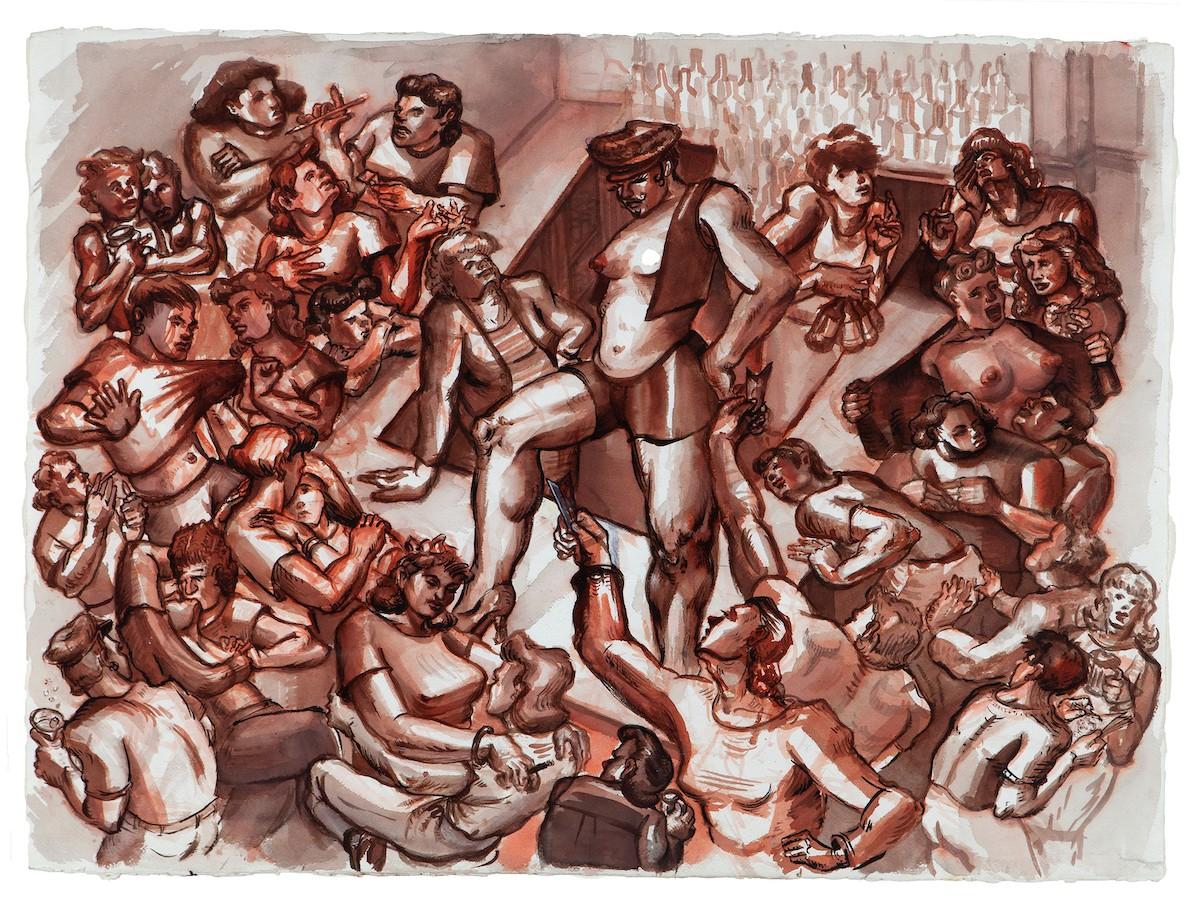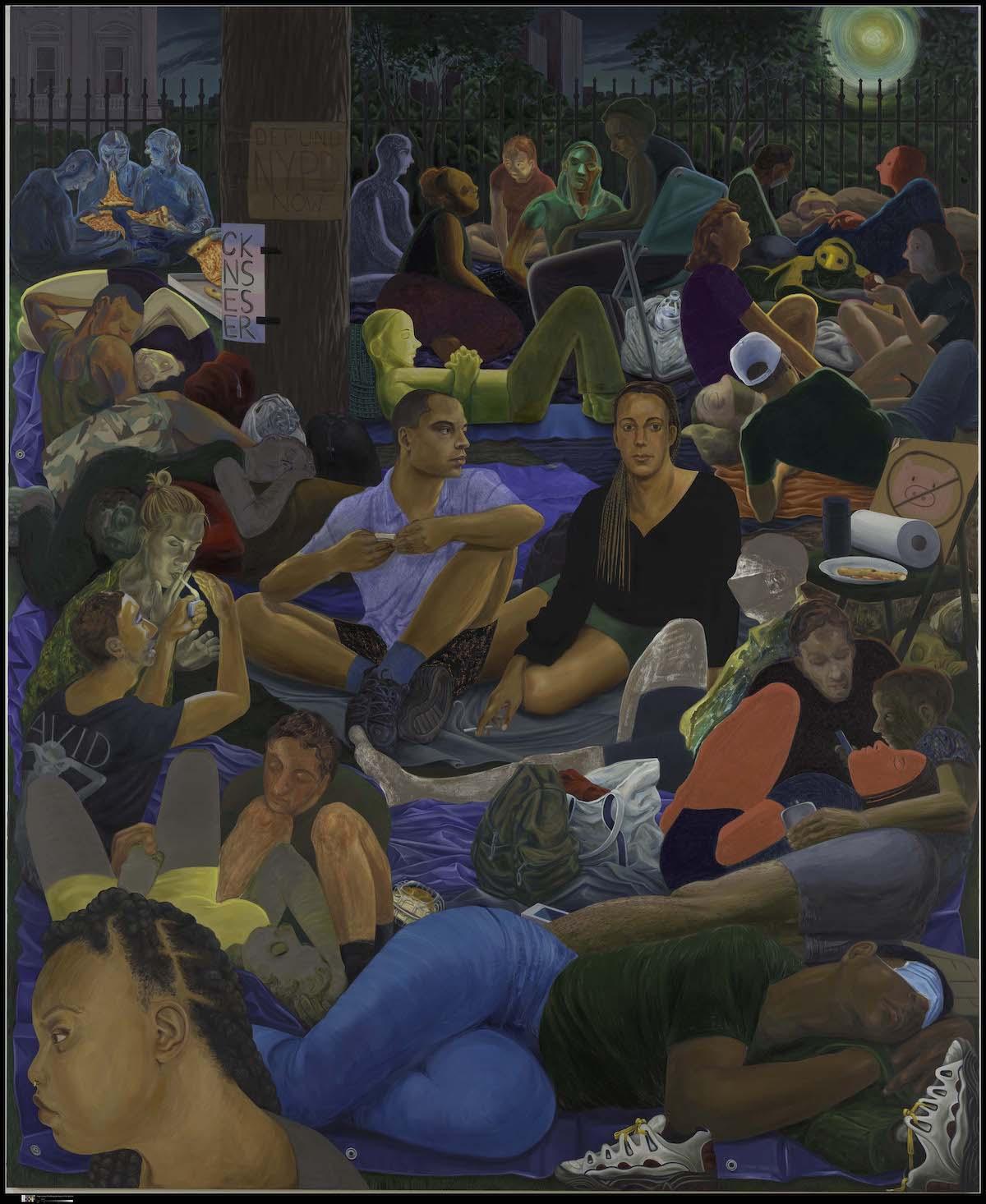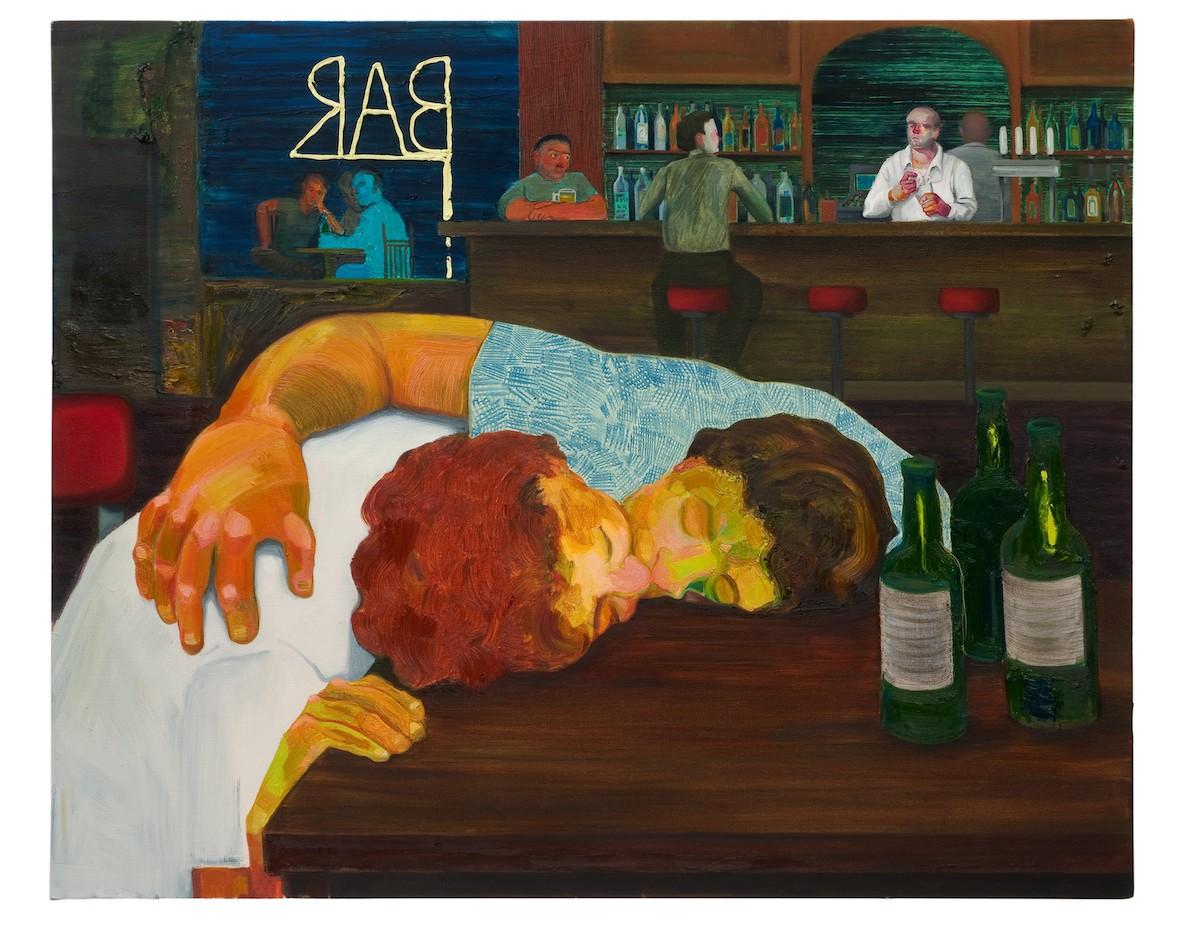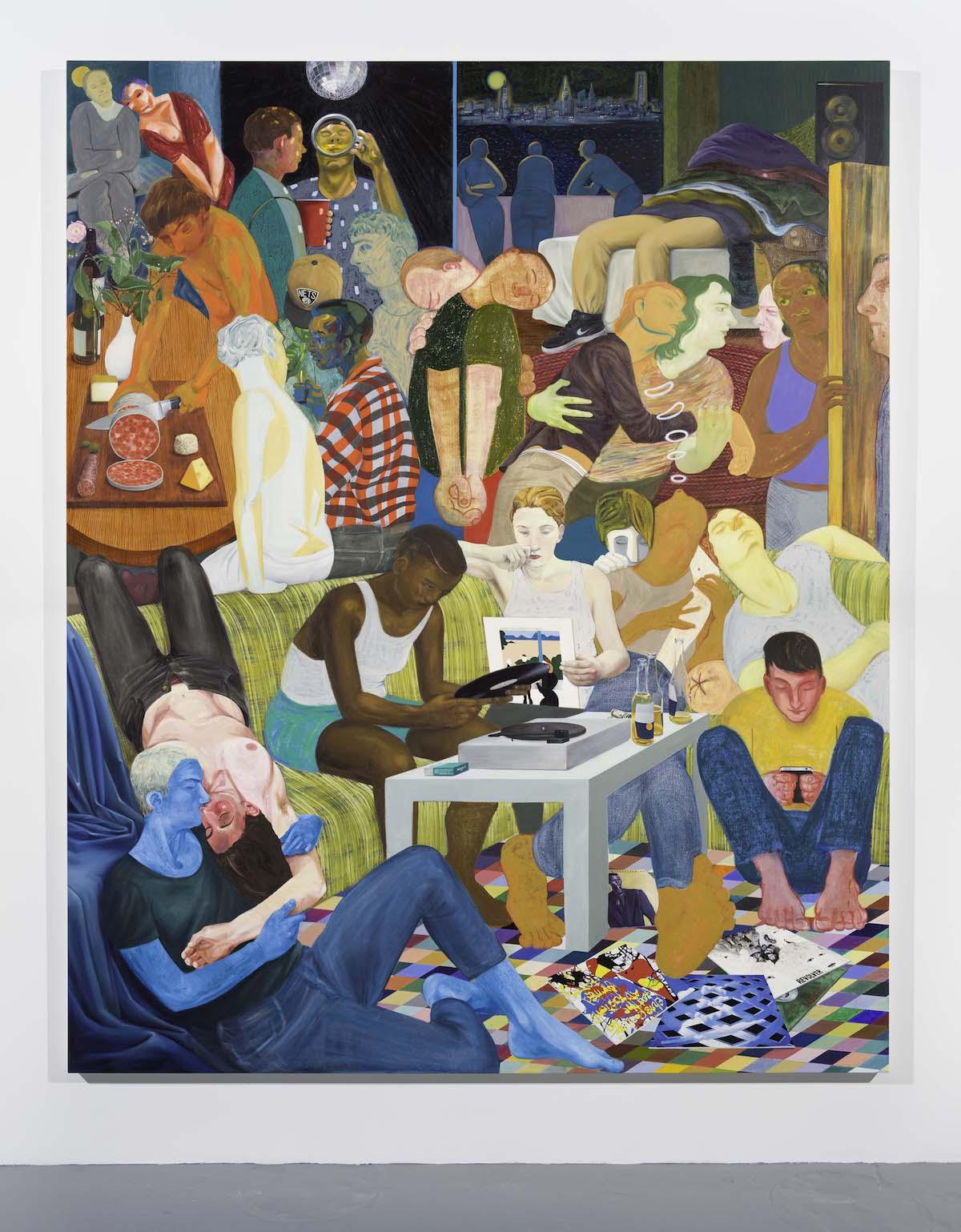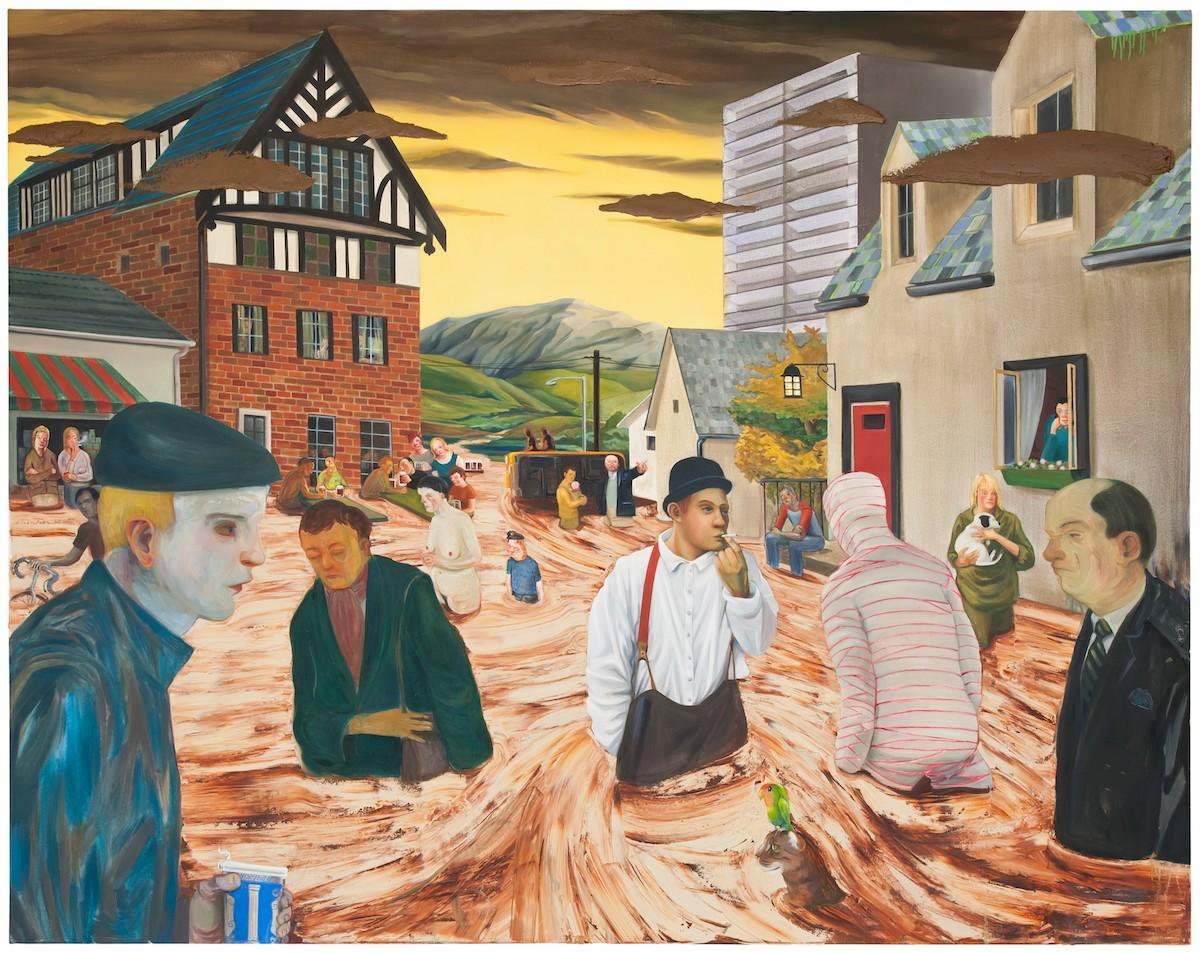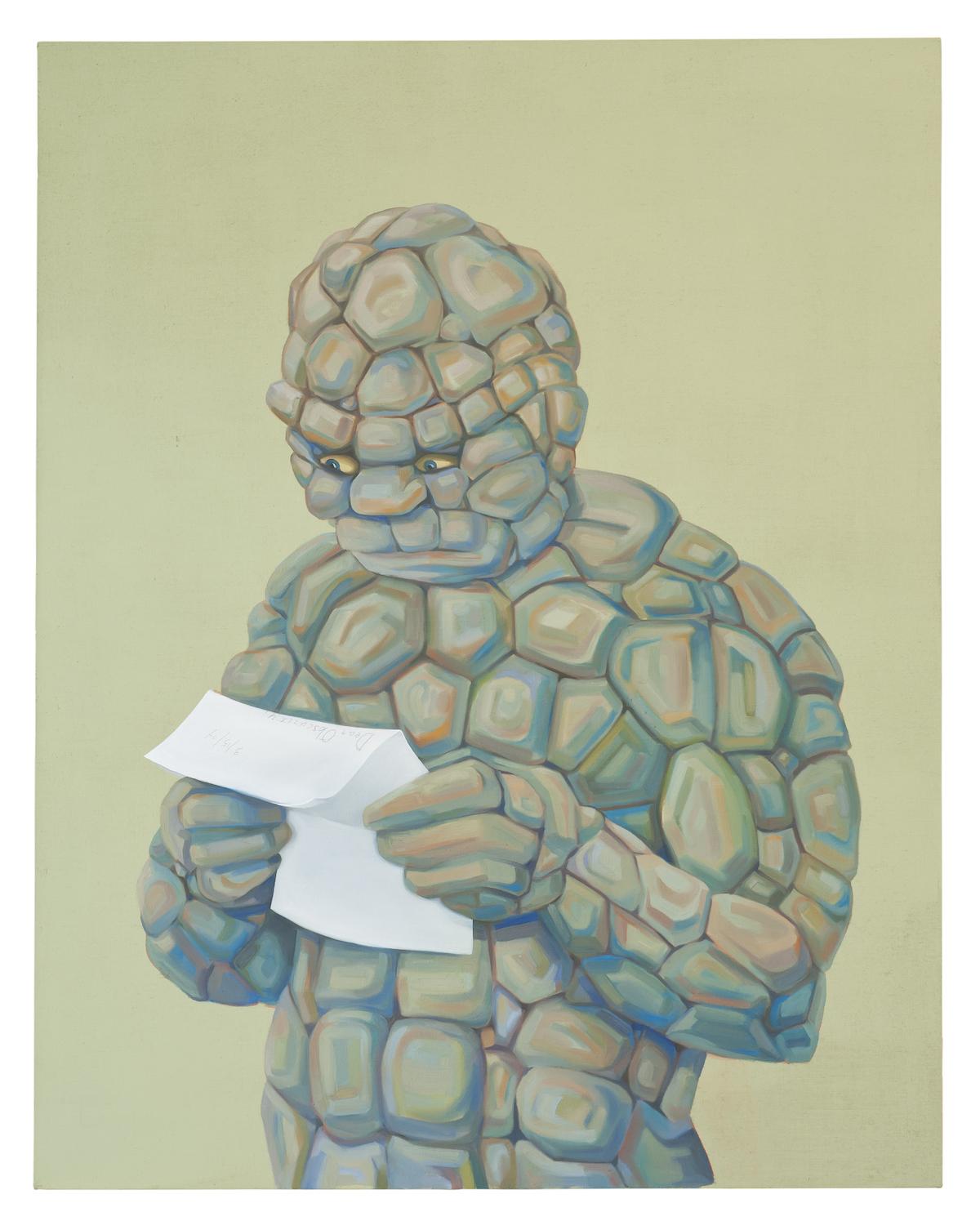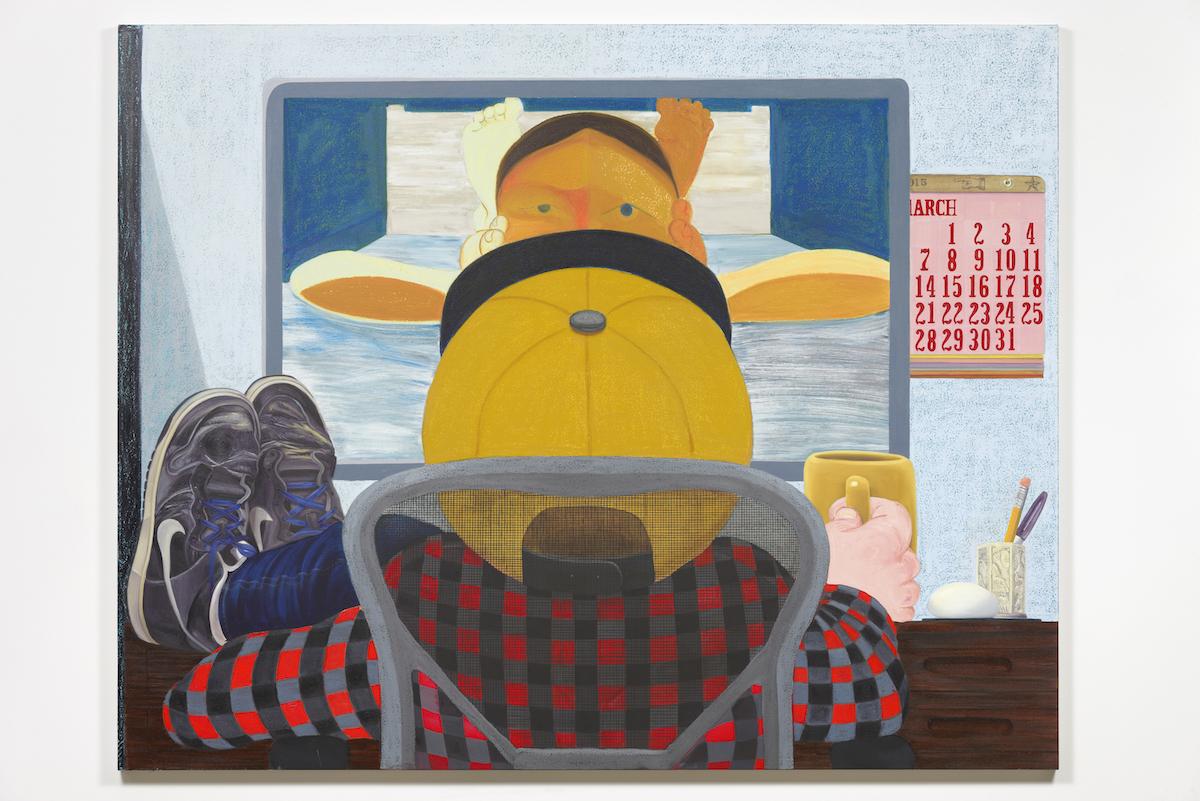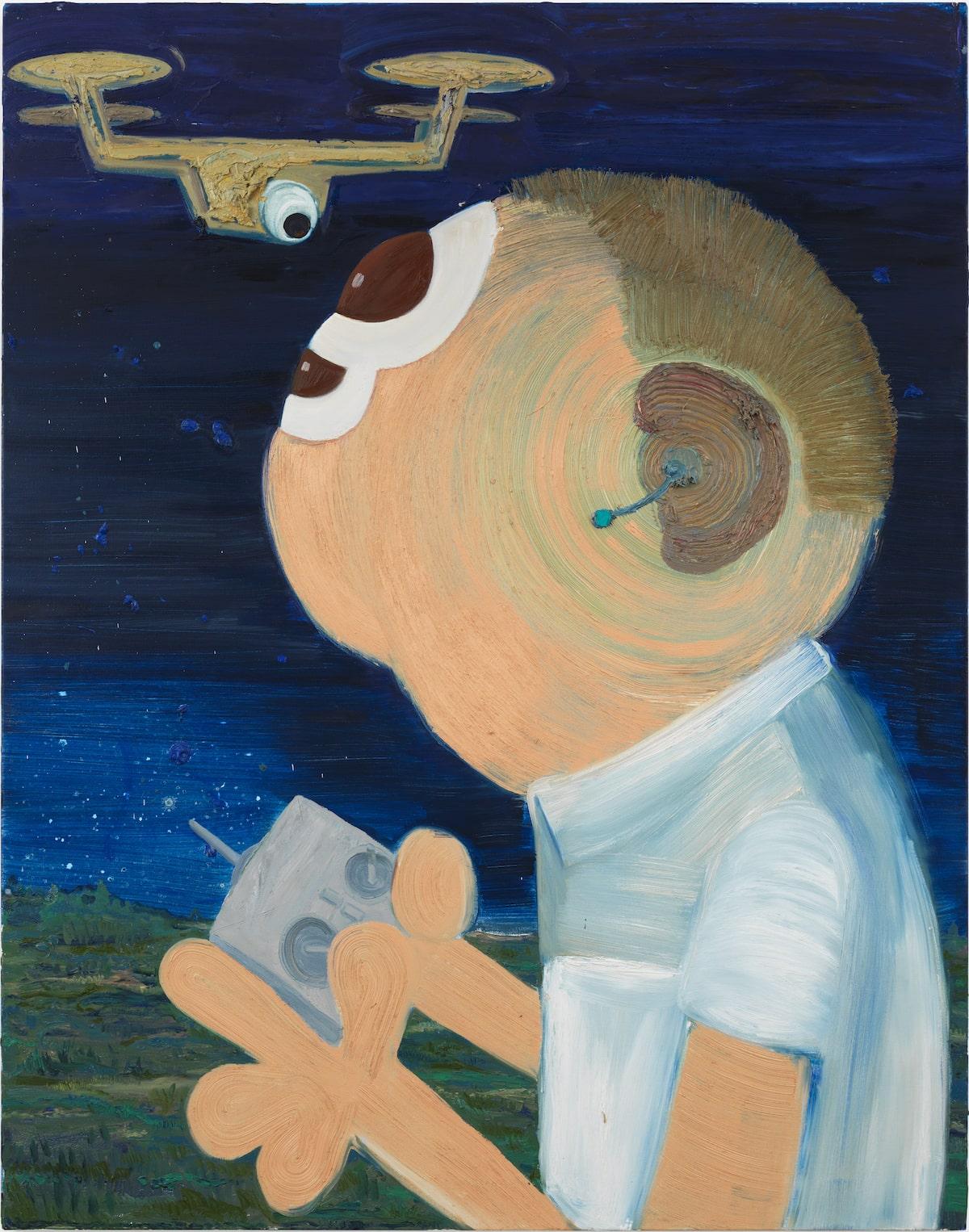The MCA exhibition has a special selection on view including paintings on canvas, mixed media on paper, and sculpture. In some of her work dating from the early 1990s, the artist’s interests and inspirations seem more evident as the paintings in question include a multitude of figures not unlike the paintings made by the Mannerists, but here the artist uses various shades of a singular color in elaborate scenes. With titles such as Trash’s Dance (1992), Artforum (1993), and Lemonade Stand (1994), these three examples feature monochromatic tones ranging from shades of pink, grey, and blue and a landscape of bodies.
This modality of working with many figures in a what feels like a small space is also relevant once again in The Abolitionists in the Park (2020-2021) which the artist made during the pandemic in reference to friends and family who protested after George Floyd’s murder in support of Black Lives Matter. The work is on loan from the Metropolitan Museum of Art and features a selection of people sitting in a park, clustered together with only a small section of ‘ground’ (in this case a blue picnic blanket) visible.




